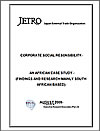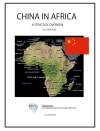BOP Report(Bottom of the Pyramid)
All data are collected in the Fiscal Year of 2008-2009.
9. Tailoring Local Solutions
In the new century, the combined sales of the world’s top 200 MNCs equal nearly 30 percent of total world gross domestic product. Yet these same corporations employ less than 1 percent of the world’s labour force. Of the world’s 100 largest economies, 51 are economies internal to corporations. Yet scores of Third World countries have suffered absolute economic stagnation or decline.
If MNCs are to thrive in the 21st century, they must broaden their economic base and share it more widely. They must play a more active role in narrowing the gap between rich and poor. This cannot be achieved if these companies produce only so-called global products for consumption primarily by Tier 1 consumers. They must nurture local markets and cultures, leverage local solutions, and generate wealth at the lowest levels on the pyramid. Producing in, rather than extracting wealth from, these countries will be the guiding principle.
To do this, MNCs must combine their advanced technology with deep local insights. Consider packaging. Consumers in Tier 1 countries have the disposable income and the space to buy in bulk (e.g., 10-pound boxes of detergent from superstores like Sam’s Club) and shop less frequently. They use their spending money to “inventory convenience.” Tier 4 consumers, strapped for cash and with limited living space, shop every day, but not for much. They can’t afford to stock up on household items or be highly selective about what they buy; they look for single-serve packaging. But consumers with small means also have the benefit of experimentation. Unburdened by large quantities of product, they can switch brands every time they buy.
Already in India, 30 percent of personal care products and other consumables, such as shampoo, tea, and cold medicines, are sold in single-serve packages. Most are priced at Rs. 1 (about 1¢). Without innovation in packaging, however, this trend could result in a mountain of solid waste. Dow Chemical Company and Cargill Inc. are experimenting with an organic plastic that would be totally biodegradable. Such packaging clearly has advantages in Tier 4, but it could also revolutionise markets at all four tiers of the world pyramid.
For MNCs, the best approach is to marry local capabilities and market knowledge with global best practices. But whether an initiative involves an MNC entering Tier 4 or an entrepreneur from Tier 4, the development principles remain the same: New business models must not disrupt the cultures and lifestyles of local people. An effective combination of local and global knowledge is needed, not a replication of the Western system.
The development of India’s milk industry has many lessons for MNCs. The transformation began around 1946, when the Khira District Milk Cooperative, located in the state of Gujarat, set up its own processing plant under the leadership of Verghese Kurien and created the brand Amul, today one of the most recognised in the country.
Unlike the large industrial dairy farms of the West, in India, milk originates in many small villages. Villagers may own only two to three buffaloes or cows each and bring their milk twice a day to the village collection centre. They are paid every day for the milk they deliver, based on fat content and volume. Refrigerated vans transport the milk to central processing plants, where it is pasteurised. Railroad cars then transport the milk to major urban centres.
The entire value chain is carefully managed, from the village-based milk production to the world-scale processing facilities. The Khira District cooperative provides such services to the farmers as veterinary care and cattle feed. The cooperative also manages the distribution of pasteurised milk, milk powder, butter, cheese, baby food, and other products. The uniqueness of the Amul cooperative is its blending of decentralised origination with the efficiencies of a modern processing and distribution infrastructure. As a result, previously marginal village farmers are earning steady incomes and being transformed into active market participants.
Twenty years ago, milk was in short supply in India. Today, India is the world’s largest producer of milk. According to India’s National Dairy Development Board, the country’s dairy cooperative network now claims 10.7 million individual farmer member–owners, covers 96,000 village-level societies, includes 170 milk-producer unions, and operates in more than 285 districts. Milk production has increased 4.7 percent per year since 1974. The per capita availability of milk in India has grown from 107 grams to 213 grams per day in 20 years.
目次
- 1. Reperceiving Business from the Bottom Up
- 2. Bop in Brief
- 3. Four Consumer Tiers
- 4. The Invisible Opportunity
- 5. Tier 4 Pioneer
- 6. Creating Buying Power
- 7. Shaping Aspirations
- 8. Improving Access
- 9. Tailoring Local Solutions
- 10. Putting It All Together
- 11. A Common Cause
- 12. BOP Experiments in the Field
- 13. A BOP Typology
- 14. What's Next for BOP?
- 15. How to Get Started: The Conceptual Framework for BOP Innovation
- 16. BoP Conferences
- 17. Case Studies and Relevant Reference Material
- Bibliography




